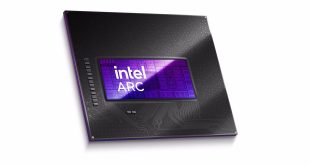Nvidia Corp. on Thursday confirmed that has begun to offer its latest “Maxwell” graphics processing technology to third-party developers of application processors. The company also confirmed that it is negotiating with multiple parties over licensing of its graphics cores. The company believes that its graphics technologies will help SoC designers to differentiate their offerings.
“Our licensing discussions are very active,” said Jen-Hsun Huang, CEO of Nvidia, during quarterly conference call with investors and financial analysts. “We have many in important stages.”
Nvidia unveiled plans to license its graphics processing technologies to third-party developers of mobile and ultra-mobile application processors in June, 2013. So far, the company has not formally signed a single licensing deal, but, as it appears, it is in talks with multiple companies.
Nvidia itself believes that integration of its graphics processing technologies is a way for designers of application processors to differentiate themselves Quite naturally, application processors with Nvidia GeForce inside help to differentiate on the market of mobile devices that is commoditizing these days. Interestingly, Mr. Huang also confirmed that the company is already offering its latest Maxwell technology for licensing.
“By adding Nvidia GPU to their SoC, [chip developers] can differentiate head and shoulders above the rest of the industry,” said Mr. Huang. “I think Maxwell surely adds value in that process.”
At present Nvidia offers Tegra K1 system-on-chips with GeForce graphics based on the “Kepler” architecture as well as four ARM Cortex-A15 or two Nvidia “Denver” general-purpose processing cores. The company is expected to unveil new breed of Tegra SoCs with “Maxwell” graphics technology early in 2015.
Discuss on our Facebook page, HERE.
KitGuru Says: Keeping in mind that Nvidia’s “Maxwell” architecture is considerably more power efficient than the company’s “Kepler” technology, it has significantly better chances to land in third-party SoC designs. Still, we have no idea how the “Maxwell” compares to ARM’s Mali T800 or ImgTec’s PowerVR series 6 and series 6XT graphics processing technologies in terms of performance-per-watt and performance-per-square-millimeter.
 KitGuru KitGuru.net – Tech News | Hardware News | Hardware Reviews | IOS | Mobile | Gaming | Graphics Cards
KitGuru KitGuru.net – Tech News | Hardware News | Hardware Reviews | IOS | Mobile | Gaming | Graphics Cards




Yeap!
“You have two choices. You licence out tech, or we sue you because WE INVENTED THE GPU”
Remember?….
Anyway. Nvidia is trying to replace open standards with Nvidia proprietary ones. If AMD doesn’t do something, they might succeed.
Yeap!
“You have two choices. You licence out tech, or we sue you because WE INVENTED THE GPU”
Remember?….
Anyway. Nvidia is trying to replace open standards with Nvidia proprietary ones. If AMD doesn’t do something, they might succeed.
AMD already has the APU, though.
AMD already has the APU, though.
In the PC market it’s not just AMD’s APUs. Intel’s processors also have graphics on them, so in a way you can also call them APUs, but forget about PCs. When mentioning AMD I had in my mind not the PC market, but the ARM based chips AMD is preparing for 2015.
Nvidia is NOT targeting the PC market with this. They are interested in the mobile market. K1 is great but as a company they are insignificant in that market. If they manage to put Maxwell in most mobile SoCs, first they will be able to promote CUDA, PhysX and whatever else they have in that market, over the open standards, like they are doing in PCs and secondly they will make other GPUs look inferior because they wouldn’t support those Nvidia proprietary techs.
Nvidia is trying to create an ecosystem where everyone will be paying them royalties, or anything different than their own, will look inferior even if it isn’t.
Intel should license this core. That would make for a killer tablet CPU.
Intel should license this core. That would make for a killer tablet CPU.
At last!! you’ll be able to create more cash in part-time at your home on net on laptop computer and you’ll be able to earn Profit in same time doing different jobs… Last Monday I got a brand new BMW since getting a check for $6474 this – 4 weeks past. I began this 8-months ago and immediately was bringing home at least $77 per hour. I work through this link, go to tech tab for work detail,,,,,,,,……………
►►►►►►►http://GoogleHomeJobs/Get_StartProfit/New….
Yeah, I know. AMD’s APUs are more than just Desktop/Laptop type chips, though. They have a wide array of decent uses.
Yeah, I know. AMD’s APUs are more than just Desktop/Laptop type chips, though. They have a wide array of decent uses.
Spot on really, it makes more sense for Nvidia fo follow imagination and power vr, the more devices are using there GPU the more likely it is that things will move Nvidia’s way, the problem tegra faces is that it’s now the most gapable GPU in the mobile space but nobody is willing to produce software for what is currently a niche product.